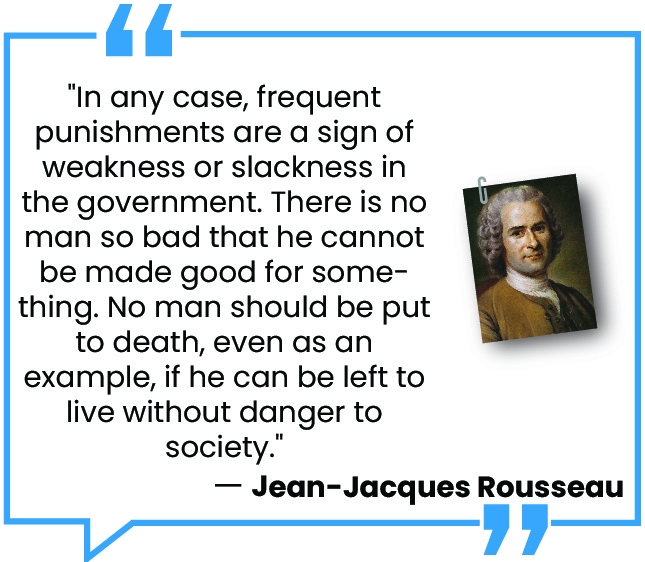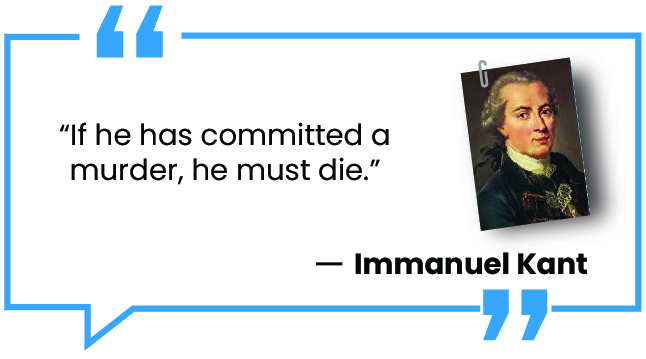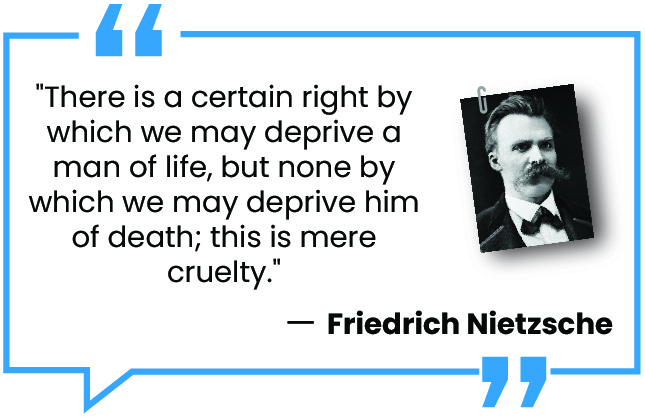Stakeholders and their Concerns | |
Stakeholders | Interests and Concerns |
Condemned Individuals | Right to Life, Fair Trial and Due Process, Discrimination, Irreversible punishment, Psychological toll etc. |
Victims' Families | Justice and Closure, Retribution (Punishment) and Restorative (Reconciliation) justice, Prolonged Legal Process etc. |
Society at Large | Public safety, Justice, Collective conscience and Moral standards |
Legal and Judicial Systems | Ensuring fair trials, Upholding constitutional values, Balancing deterrence with human rights, Irreversibility of Error |
Human Rights Organizations | Reform over Retribution, Human Dignity, right to life and the potential for judicial errors. |
Governments and Policymakers | Navigating public opinion, International obligations, Effectiveness of capital punishment as a deterrent. |
Introduction
Historically, all societies have used the death penalty/capital punishment to deter heinous crimes. Since the mid-20th century, human rights campaigns have led to its abolition or moratorium in about 170 countries. Yet, Amnesty International's 2024 report notes a 32% global surge in executions from countries like China, Iran, Saudi Arabia, Singapore, etc., making capital punishment a highly contentious issue in modern criminal justice and ethics.
Capital Punishment and the Philosophy behind it?

- Capital punishment or death penalty is the execution of an offender sentenced to death after conviction by a court of law for a criminal offense.
- It is based on the principle of retributive justice.
- Retribution says that aim of punishment is to right the wrong rather than to control or prevent crime and nature of punishment is based on the severity of the offence.
- In the Bharatiya Nyaya Sanhita (BNS), capital punishment, or the death penalty, is primarily outlined in sections 103 and 104 for murder-related offenses.
Evolution of death penalty in India
- Ancient India: Death penalty existed in various forms under Hindu Laws, guided by texts like Manusmriti and Arthashastra.
- Punishments were often severe for crimes like murder, treason, or violating social norms, with methods like beheading, impalement, or drowning.
- However, the approach varied by region, ruler, and caste, with some texts advocating restraint or alternative punishments like exile or fines for lesser crimes.
- Medieval India:
- Under Mughal and regional kingdoms, the death penalty was common for serious offenses like rebellion, murder, or theft under the Islamic law (Sharia).
- Hindu kingdoms continued to follow customary laws under Manusmriti, with punishments varying by local traditions.
- Modern India:
- Colonial Period: The British formalized the death penalty under the Indian Penal Code (IPC) of 1860, prescribing it for crimes like murder, treason, and dacoity with murder.
- Hangings became the standard method, conducted in jails rather than public spaces.
- Post-Independence: The death penalty continued under the IPC, primarily for violent crimes, however, the Constitution under Article 21 ensures due process.
- Colonial Period: The British formalized the death penalty under the Indian Penal Code (IPC) of 1860, prescribing it for crimes like murder, treason, and dacoity with murder.
Arguments for the death penalty

- Deterrence: Based on the principle of utilitarianism (Consequentialist Ethics), some argue that death penalty deters serious crimes, thus protecting society and reducing future harm.
- Retributive Justice: Justice requires that wrongdoers receive punishment proportionate to their crimes. The principle of "an eye for an eye" is often invoked.
- Prevention of re-offending: Some supporters of death penalty argue that that those who are executed cannot commit further crimes, thus, reducing crime rates in future.
- Closure and vindication: It is often argued that the death penalty provides closure for victims' families.
- Drain on public finances: Maintaining a secure prison system for high-risk, violent offenders act as a drain on government resources.
Arguments against the death penalty
- Violation of Human Rights: Based on the principle of Deontological Ethics (Kantian Perspective), which states that certain actions (e.g., taking human life) are morally wrong regardless of their consequences.
- Risk of Irreversible Error and Discrimination: The justice system is not perfect, and there is always a possibility of errors leading to wrongful convictions. Once a person is executed, the error cannot be reversed, making it a final and irreversible punishment.
- Lack of Deterrence and Alternatives: There is little evidence that the death penalty is more effective than life imprisonment in deterring crime.
- Some studies have even suggested that the death penalty may have the opposite effect, as criminals in some cases have tried to kill their victims to prevent them from testifying and risk getting a death sentence.
Death Penalty in India
|
Way Forward

- Need for Balance: Death penalty debate must balance the accused's rights, victims' interests, and society's need for justice and deterrence.
- Prioritizing retribution may neglect restorative and rehabilitative aspect of justice, crucial for a fair and humane legal system.
- Law Commission Recommendation: The 262nd Law Commission Report (2015) recommended abolishing the death penalty for all crimes except terrorism and related offences, citing its limited deterrent effect and the risk of judicial error.
- International Perspective: Article 6 of the International Covenant on Civil and Political Rights (ICCPR) permits the death penalty only for the "most serious crimes" and encourages its abolition.
- Human Rights Organizations: These organisations recommend a shift toward victim-centric justice and restorative practices, emphasizing rehabilitation and community healing over retributive punishment.
Conclusion
Since the adoption of the Universal Declaration of Human Rights (UNDHR) in 1948, there has been a marked global shift towards abolition. Despite this progress, the death penalty persists in several countries, often amid allegations of unfair trials, political repression, or use for non-violent offenses. Thus, humane and evidence-based alternatives are needed to ensure justice and respect for life.
Check Your Ethical AptitudeRavi, a 28-year-old man, has been convicted of the premeditated and brutal murder of a police officer in a high-profile case that received wide media coverage. The trial court has sentenced him to death under the relevant provisions of the Bharatiya Nyaya Sanhita. The family of the slain officer is demanding justice and closure through execution, while multiple human rights organizations are petitioning for the sentence to be commuted to life imprisonment, citing the irreversible nature of the punishment and the global trend toward abolition. Ravi has already spent 3 years on death row during the trial and appeals process, and his mental health has visibly deteriorated. His lawyer argues that the punishment violates his fundamental right to life and dignity. You are a senior officer in the Ministry of Law and Justice, tasked with advising the government on whether to uphold the sentence or recommend clemency. Based on the above case study, answer the following questions as a senior officer:
|




